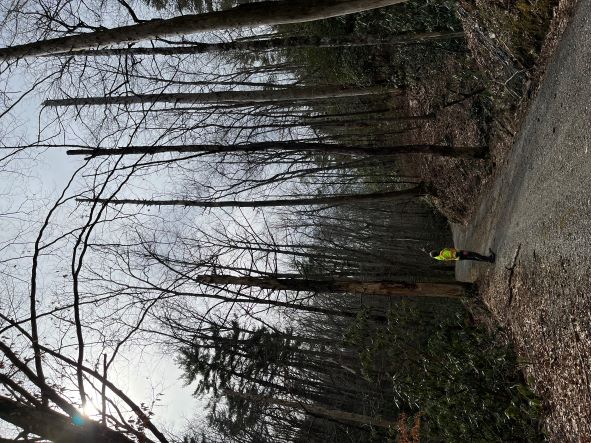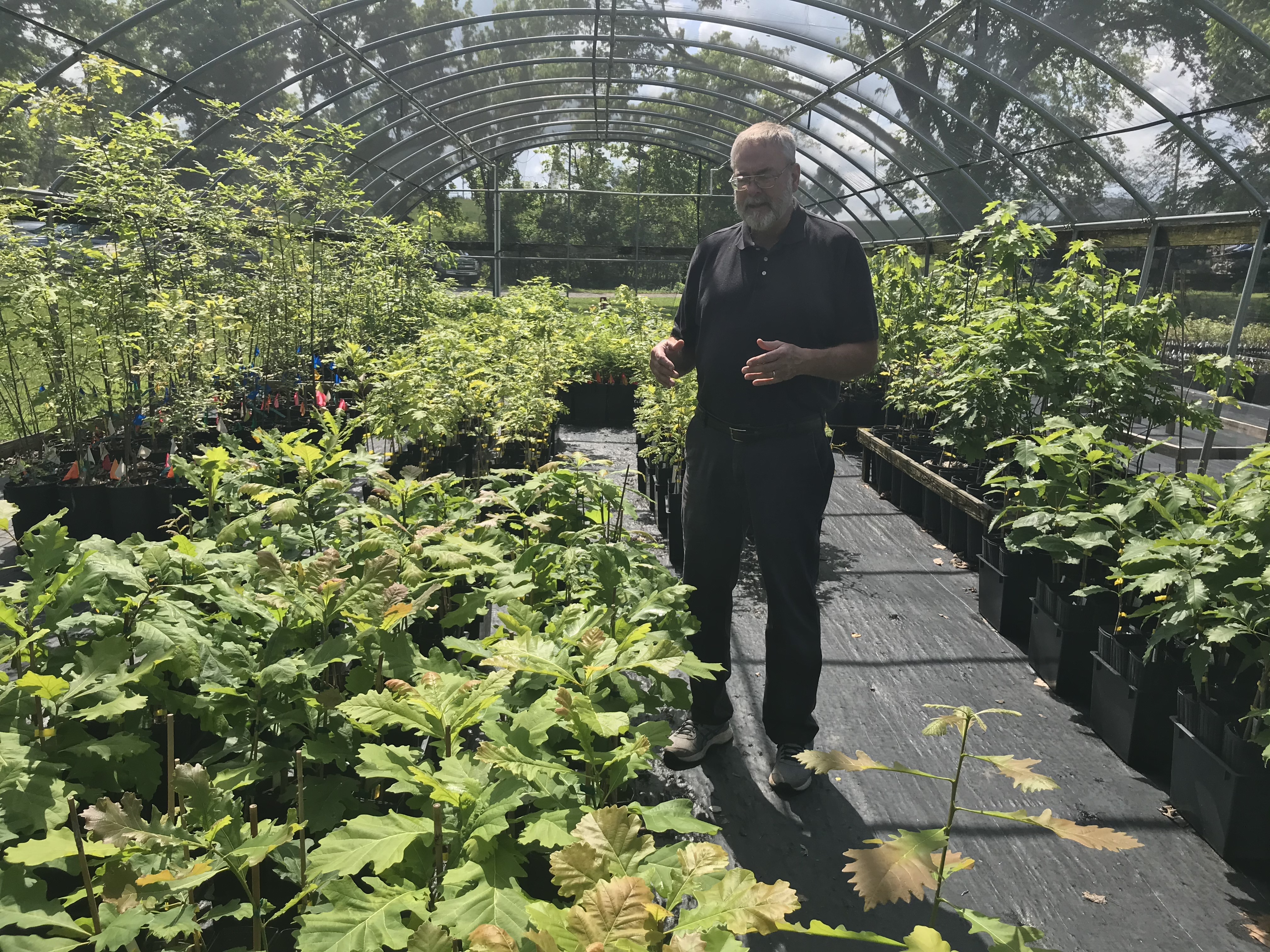Displaying items by tag: hemlock woolly adelgid
You’re invited to the annual Big South Fork and Obed science meeting

ONEIDA — On March 13, 2024 the National Park Service will host its annual public science meeting at Historic Rugby Visitor Center at 1331 Rugby Parkway, Rugby, Tennessee.
The public is invited to spend the day with scientists who have been conducting research at Obed Wild and Scenic River, Big South Fork National River and Recreation Area, and other areas on the Cumberland Plateau.
A wide range of topics specific to the Upper Cumberland Plateau will be covered during the day, including talks on wild hogs, restoration efforts at cultural landscapes, impacts from hemlock wooly adelgid on native hemlock trees, and other topics.
Appalachian trout in trouble as temps rise, storms rage
 Michael Bradley, a fly-fishing guide, on Raven Fork in the Oconaluftee area of the Great Smoky Mountains. U.S. Fish and Wildlife Service
Michael Bradley, a fly-fishing guide, on Raven Fork in the Oconaluftee area of the Great Smoky Mountains. U.S. Fish and Wildlife Service
Climate change could steal your fish
Dan Chapman is a public affairs specialist for the Southeast Region of U.S. Fish and Wildlife Service.
CHEROKEE — The mountains of the Southern Appalachians were scraped clean a century ago. Headwater ecology changed as the canopy of trees disappeared that was shading the streams from all but the noonday sun. Rainstorms pushed dirt and rocks into the water muddying the feeding and breeding grounds of fish, amphibians and insects.
Lower down the mountain, newly cut pastures edged right up to the creeks while cows mucked up the once-pristine waters. Invasive bugs killed hemlocks, ash and other shade-giving trees. Pipes, culverts and dams blockaded streams and kept animals from cooler water.
The trout never had a chance.
Now they face an even more insidious foe — climate change.
- doug reed
- chattahoochee national forest
- trout season
- trout unlimited
- nc institute for climate science
- mike lavoie
- wild brook trout
- fly fishing team
- oconaluftee river
- raven fork
- ela dam
- toccoa river
- trout fishing in the southern appalachians
- dan chapman
- eastern band of cherokee indians
- eastern brook trout
- trout fishing
- qualla boundary
- brown trout
- rainbow trout
- north carolina state university
- chattahoochee river
- rough branch
- dissolved oxygen
- climate change
- headwater
- fish biodiversity
- fish stock
- fishing
- fish hatchery
- drought
- hemlock woolly adelgid
- sedimentation
- coldwater fishery
- fish disease
National park reopens Cades Cove road traced for centuries
 Parson Branch Road in Great Smoky Mountains National Park was reopened May 26 after a six-year closure. National Park Service
Parson Branch Road in Great Smoky Mountains National Park was reopened May 26 after a six-year closure. National Park Service
Parson Branch Road had been closed since 2016 because of washouts and danger from trees killed by the hemlock woolly adelgid
This article was provided by Great Smoky Mountains National Park Public Information Officer Dana Soehn.
CADES COVE — Great Smoky Mountains National Park officials celebrated on Thursday (May 26) the reopening of Parson Branch Road with a ribbon-cutting event honoring the crew who performed the needed work and the Friends of the Smokies who provided critical funding to support the efforts. The historic gravel road, originally constructed in 1838, is now reopened to the public after a six-year closure.
“We are pleased to reopen Parson Branch Road in time for the 2022 summer season,” said Deputy Superintendent Alan Sumeriski. “Not only does this restore access to one of the most special places in the Smokies, it also allows another opportunity for people of all abilities to spread out and explore less traveled areas of this very busy park.”
Smokies to reopen Parson Branch Road after massive clearance of trees killed by exotic insect
CADES COVE — Great Smoky Mountains National Park on Thursday plans to officially reopen Parson Branch Road, first cut through the ridges around Cades Cove 180 years ago.
The narrow, 8-mile one-way mountain road out of Cades Cove to U.S. 129 has been closed since 2016 following washouts that were compounded by a steady diet of collapsing diseased and dead hemlocks. A ceremony is set for Thursday morning at the beginning of the road in Caves Cove.
The road was closed because of the tree hazards and damage to the road surface. The hemlocks succumbed to the hemlock woolly adelgid, an exotic insect that has wreaked havoc on hemlock stands and their accompanying ecosystems.
New digital maps outline precious pockets of remaining US biodiversity and the threats they face
 The endangered Indiana bat is among threatened and endangered species in Great Smoky Mountains National Park. U.S. Fish and Wildlife Service
The endangered Indiana bat is among threatened and endangered species in Great Smoky Mountains National Park. U.S. Fish and Wildlife Service
Southern Appalachians show red as a warning on new detailed biodiversity maps
This story was originally published by the Sylva Herald.
SYLVA — Great Smoky Mountains National Park has long been known for its abundance of different species of flora and fauna.
Credit old mountains in a warm, sunny and wet region with varying types of climate, soil and stone for that large number.
“The park is almost certainly the most biodiverse national park in North America,” said Paul Super, national park science coordinator. “And certainly the most studied of any national park.”
A group of environmental organizations recently put together a series of maps illustrating the regions with the biggest threats to their biodiversity, and the area around Jackson County and the national park showed up in the red, showing risk. One such map, based on NatureServe data, is among the most detailed maps of endangered and threatened species ever produced.
Parson Branch Road improvements under way in Smokies
 Dead hemlocks are seen along Parson Branch Road near Cades Cove. National Park Service
Dead hemlocks are seen along Parson Branch Road near Cades Cove. National Park Service
CADES COVE — Great Smoky Mountains National Park contractors began removing at least 800 dead hemlock trees along Parson Branch Road, an eight-mile primitive backcountry road that connects Cades Cove with U.S. 129 on the western edge of the park.
The road has been closed since 2016 because of the tree hazards and damage to the road surface. The hemlocks succumbed to the hemlock woolly adelgid, an exotic insect that has wreaked havoc on hemlock stands and their accompanying ecosystems.
The road passes several trailheads, and is used by emergency vehicles as needed. The park initially identified some 1,700 trees that posed a hazard to the adjacent roadway, but that number has naturally declined by about half over the past six years.
Friends of Great Smoky Mountains National Park provided $100,000 for the hazard-mitigation project. That was matched with $50,000 from the federal government.
Once the dead trees are removed, work will begin to rehabilitate the roadway and ensure its safety.
The roadway could reopen this summer, according to a news release from the National Park Service.
Scott Schlarbaum speaks for the trees and the future of Tennessee forests

2-minute video on hemlock genetic diversity conservation added to this article on September 2, 2021
UT Tree Improvement Program prepares for its greatest grafting season yet
“What you have here is the future of Tennessee forests,” said Scott Schlarbaum, a professor and director of the University of Tennessee Tree Improvement Program.
You can tell from a chuckle he thinks his statement might sound hyperbolic and a bit dramatic, but it’s really not.
He gestured across an unassuming but important UT facility just off Alcoa Highway tucked within the East Tennessee AgResearch and Education Center that will be the main base for a historic tree-grafting effort that will commence this winter.
The goal: Create trees with high-quality genetic traits ranging from wildlife and habitat qualities to timber value.
Heavy traffic hissed down the nearby highway as it passed by the modest understock yard, greenhouse, raised beds and small house containing offices used as the main grafting facility for the UT Tree Improvement Program (TIP). At least 50,000 vehicles pass by the site every day but most drivers and passengers are oblivious to the existence of this small but important outpost of forest conservation skirted by a Knox County greenway.
The Tree Improvement Program was first established in 1959. It survives as a notable exception to the cost-cutting of such projects in other states at both university and government levels.
“These days we tend to look only at the short term. UT did not.”
Beginning in January, Schlarbaum, director of the program since 1983, will oversee grafting efforts on some 3,600 trees. Last year, during which TIP efforts were disrupted by the Covid-19 pandemic, about 2,000 trees were grafted.
“We are gearing up for our biggest grafting year ever. That’s a huge deal,” Schlarbaum said.